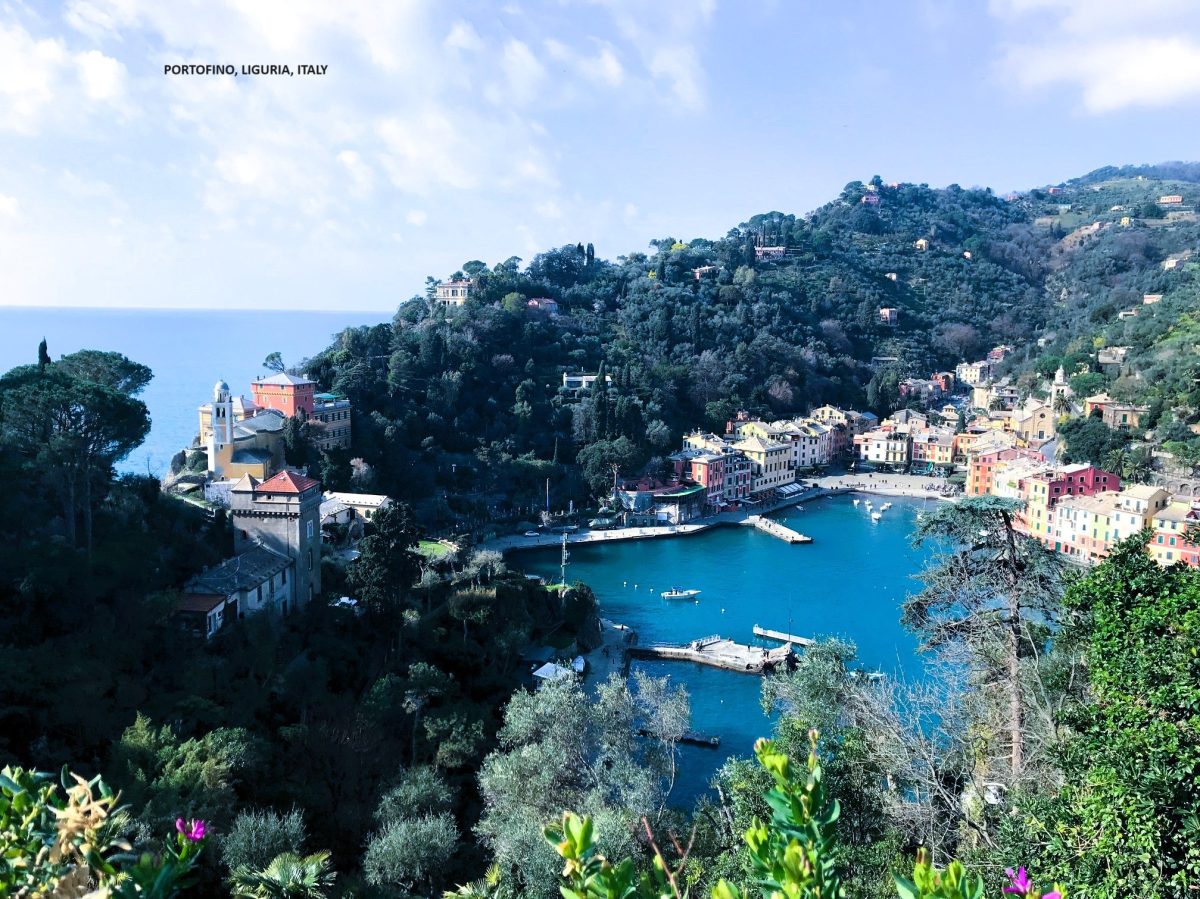The next day we crossed the border into Austria. We purchased a Vignette* online to travel the motorways and drove directly to Melk. We’d visited Melk in 2018, a stop on a river cruise from Budapest to Passau, but we had only a few hours there. This time we parked up for the night at Emmersdorf on the left bank of the River Donau (the Danube) with a view to my walking over the nearby bridge to Melk for a better look at both the town and Melk Abbey.
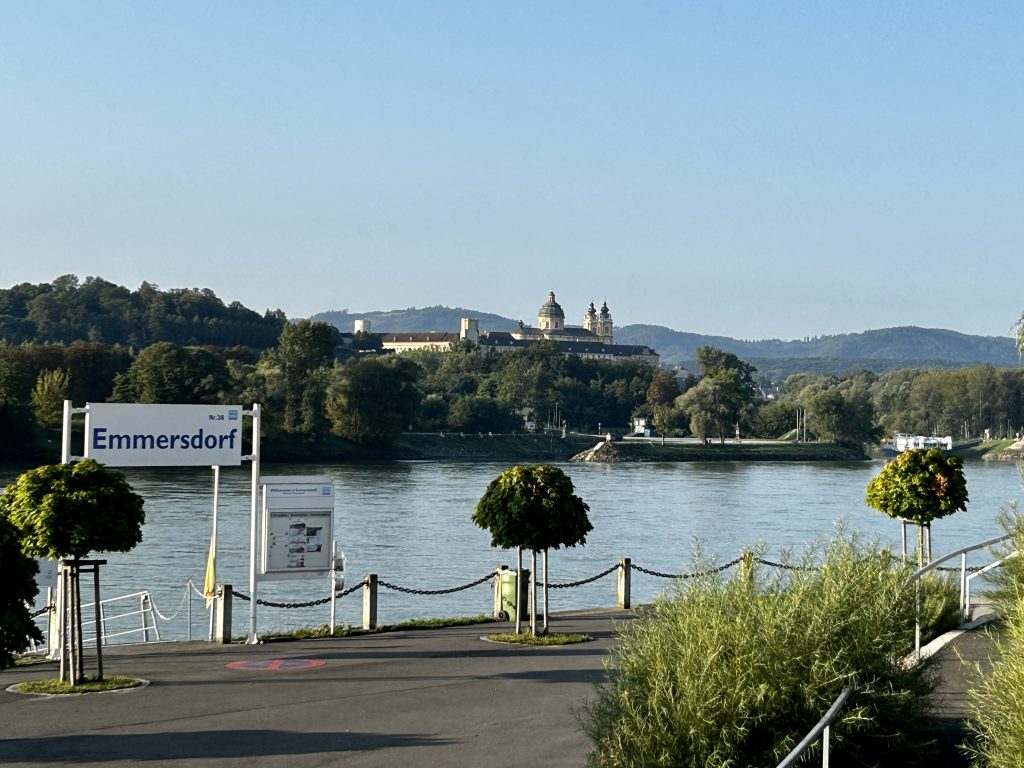
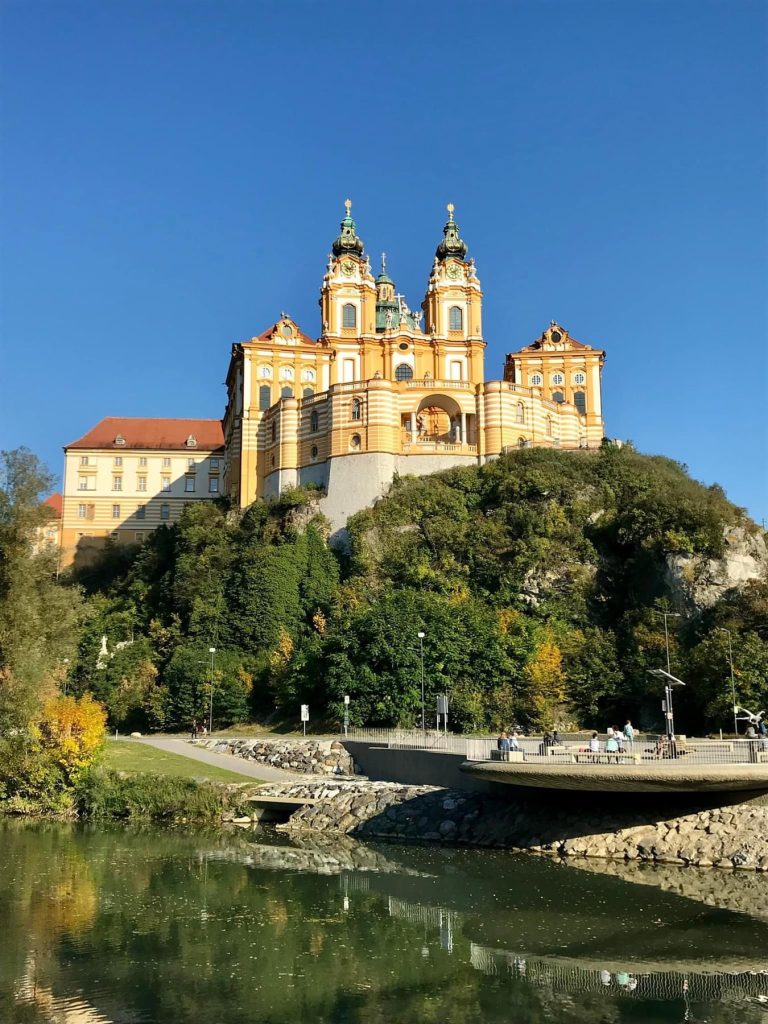
There’s been a Benedictine Abbey at Melk since 1089 but the existing yellow coloured Baroque structure was constructed between 1702 and 1736. It was designed and built by the Austrian architect Jakob Prandtauer (who trained initially as a stonemason) but he never saw the finished article. He died in 1726. It’s a stunning building which appears more of a palace than an abbey but it is the oldest monastic school in Austria and is still home to 23 monks.

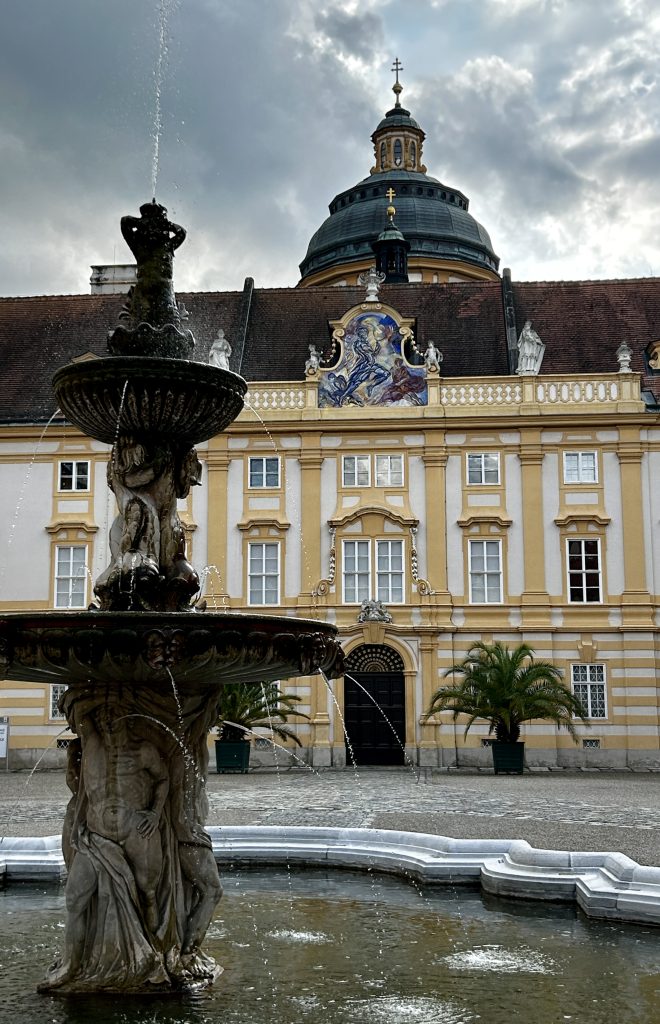

The abbey has two centrepieces; the church (with it’s many stone and wooden carvings and a breathtakingly beautiful ceiling) and the library complex (which with it’s 100,000+ books provided inspiration for Umberto Eco’s historical novel ‘The Name of the Rose’) but; the admission ticket also permits entrance into the former Imperial guest rooms (which house the Abbey Museum) and the large terrace & gardens and all are worth seeing. The pretty Garden Pavillion was being used as a small cafe – tearoom when we first visited the abbey. It may still be a cafe-tearoom but I didn’t visit it on this occasion. I fancied a pint down in the town.
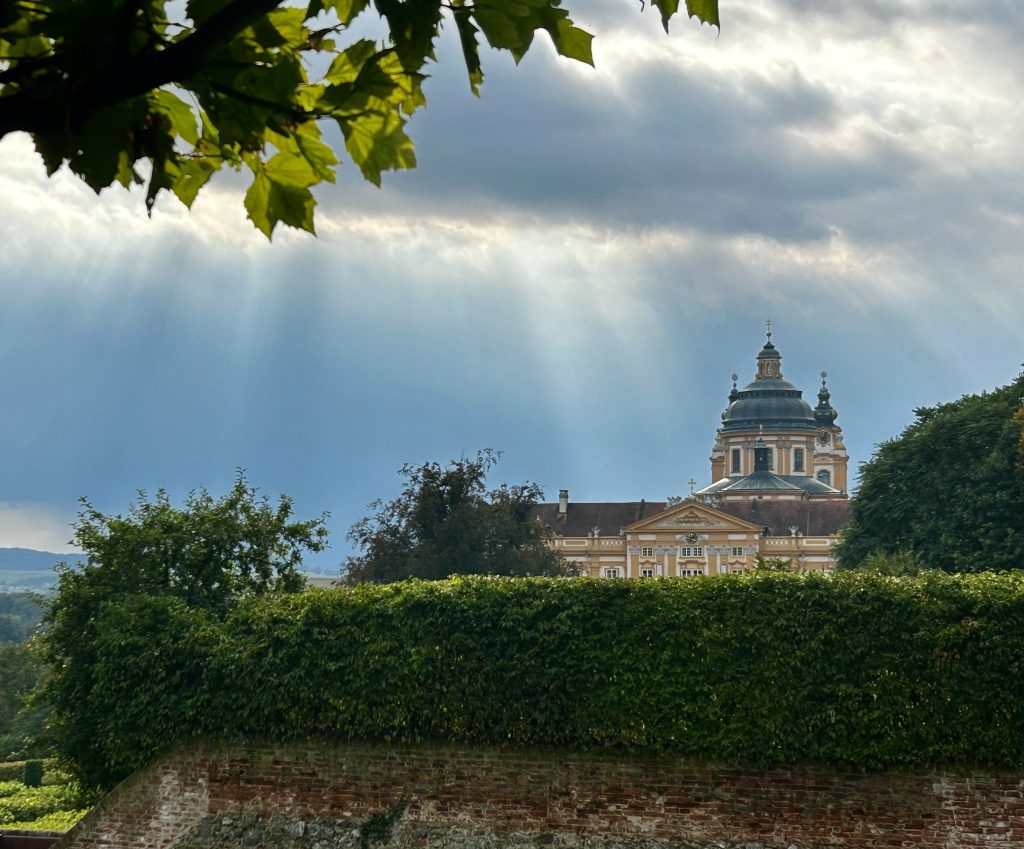
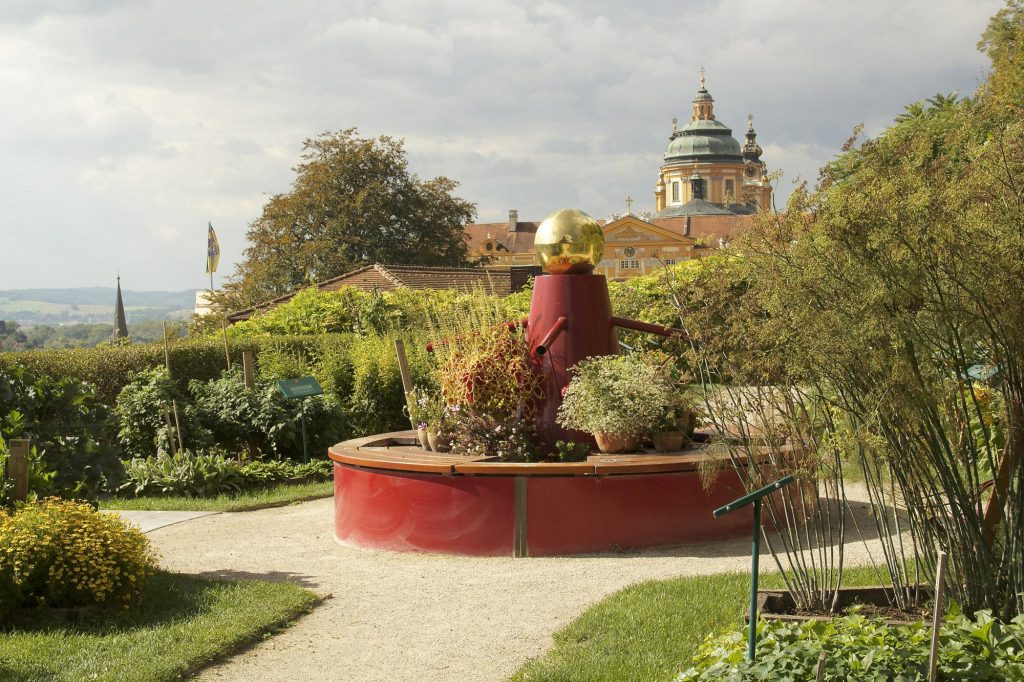
Having explored the abbey and it’s gardens for an hour or so, I descended into the old town for a beer or two before commencing the 45 minute walk back across the river to Emmersdorf and the Van. Melk old town isn’t that large but it is worth a couple of hours of anybody’s time; with the elegant Pfarrkirche Maria Himmelfahrt, proving particulary captivating.
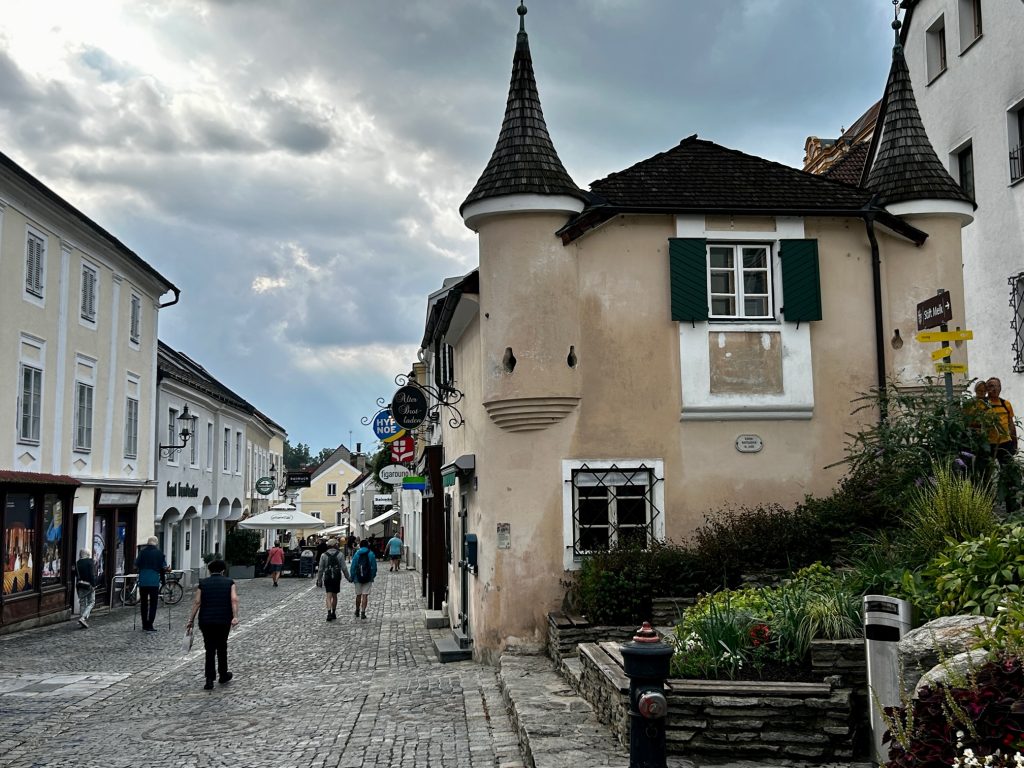
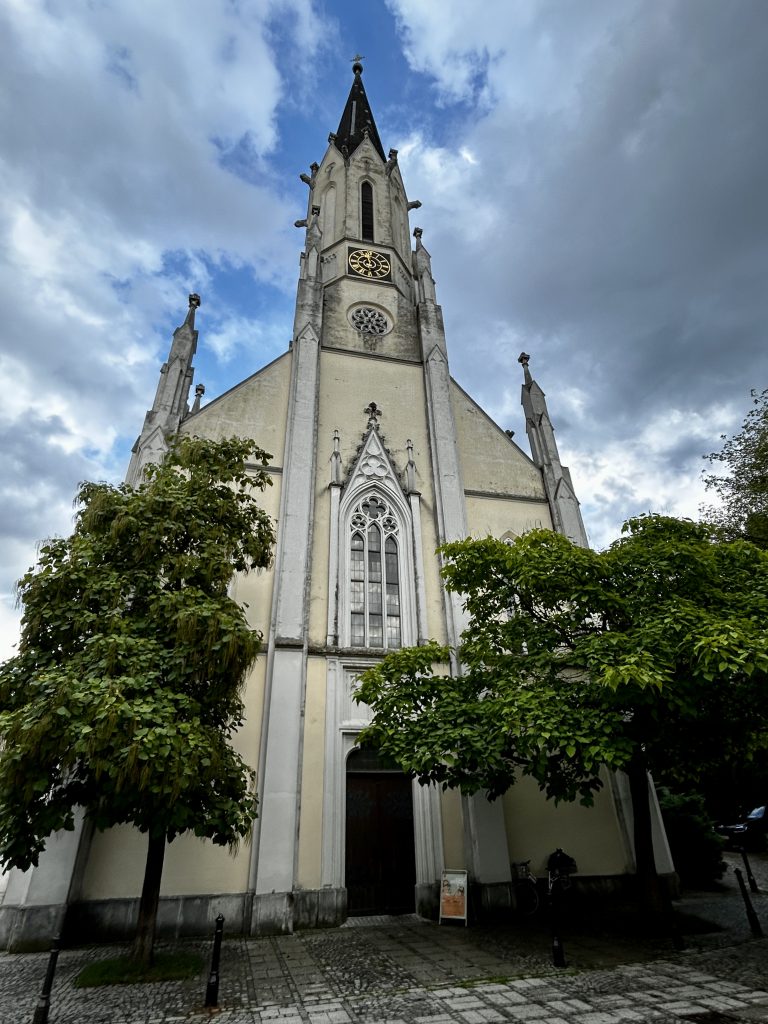
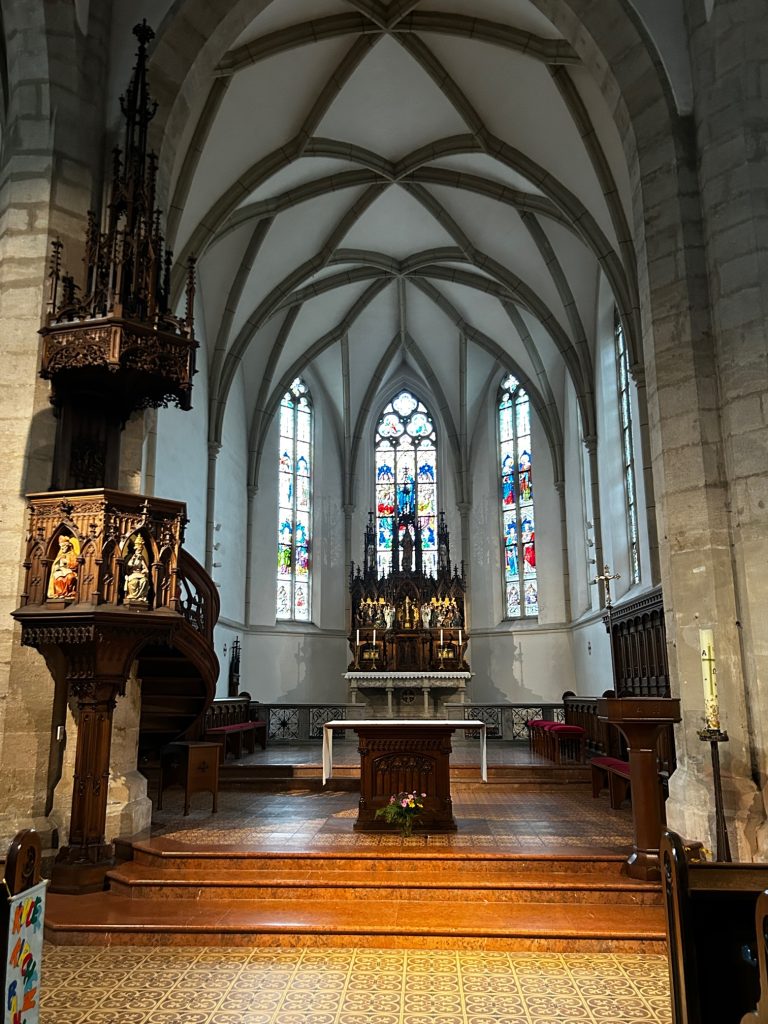
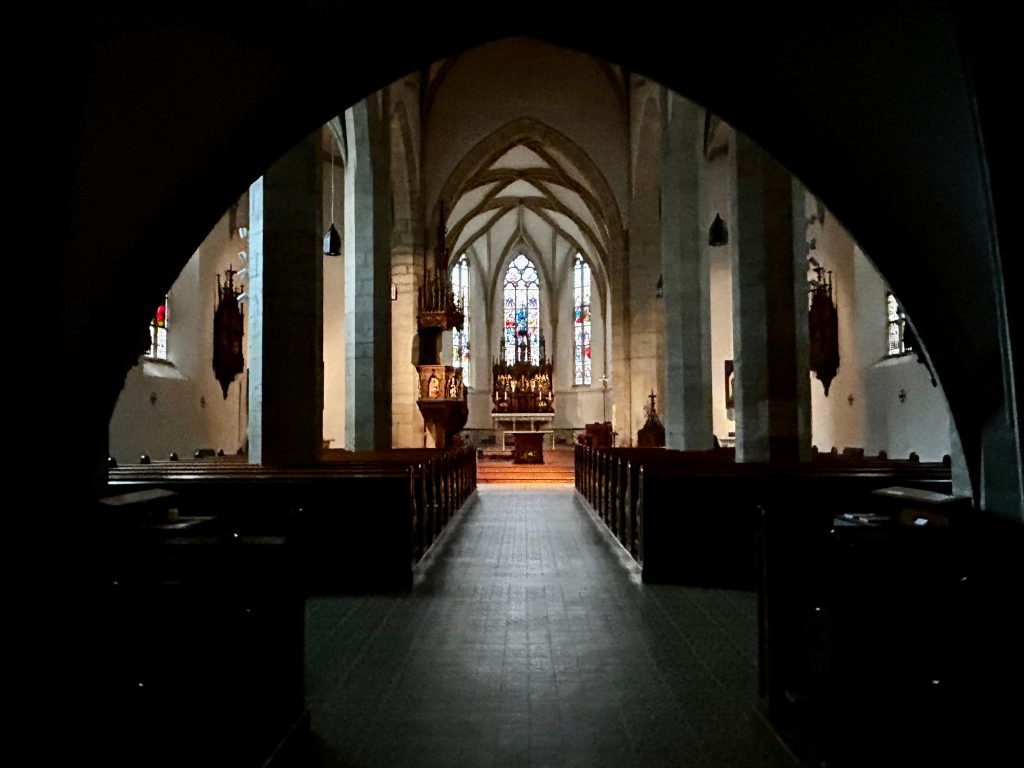
A couple of other historical landmarks to be seen in Melk old town are the town square fountain (the Kolomanbrunnen with it’s statue of Saint Koloman) and the Old Post Office (built in 1792 with a series of medallions on it’s facade which are said to be representations of old postmasters).
There are a number of saints named Koloman or Colman and at least three of them came from Ireland. The Saint Koloman featured on the well in the main square of Melk is generally known as Saint Koloman of Stockerau. He was of Irish origin. He was a pilgrim and on his way to the Holy Land when in 1012 he was arrested, tortured and hanged in the town of Stockerau as a foreign spy. It seems he couldn’t speak German and was unable to explain himself. Two years after his death the authorities in Stockerau, possibly out of remorse, moved his relics to Melk Abbey where they remain to this day. The moral of this particular story is that it is perhaps helpful if you can speak a little German in this part of the world.

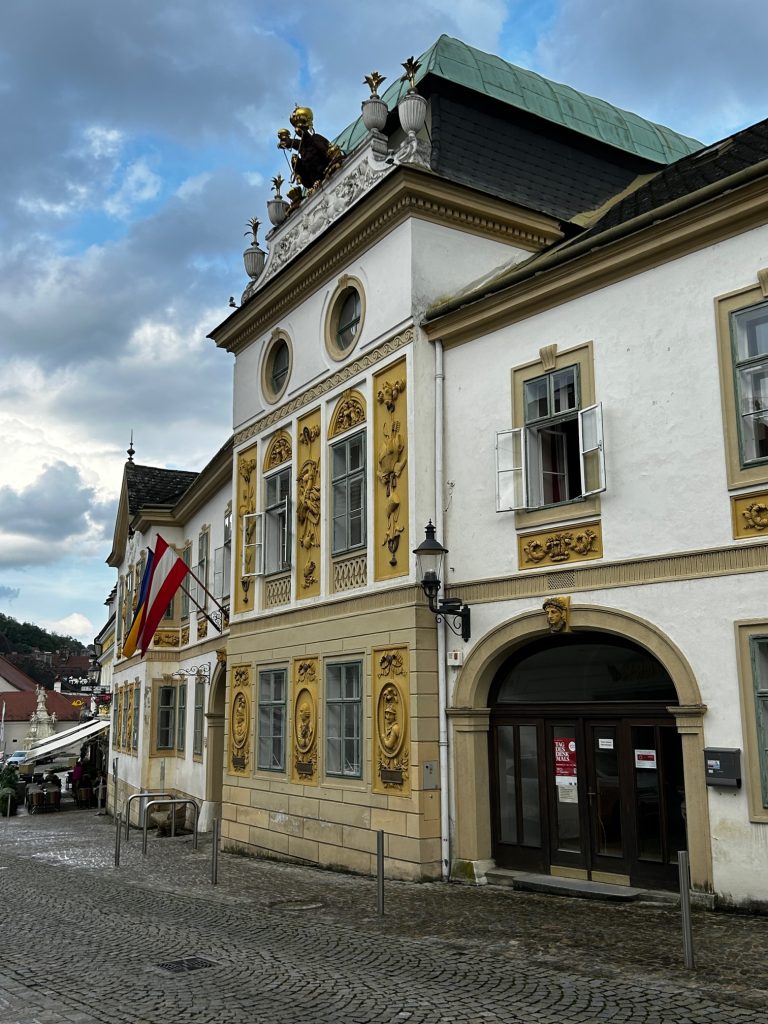
Before I forget, let me write about “Kasekrainer”. Later that day, while Vanya and I were enjoying a few glasses of Gruner Veltliner at a small kiosk style fast food bar near our campsite in Emmersdorf, I got to talking with a chap who suggested I try the local sausage known as “Kasekrainer”. He told me that these thick, slightly smoked pork sausages, which contain between 10% and 20% Emmental cheese, are served with bread and either a sweet or a spicy mustard AND that the ones sold by the kiosk bar are the best in the area. It seems the sausages were created by a couple of Austrians in the 1960’s and are now Austria’s favourite fast food. I ordered two (one with the sweet sauce and one with the spicy sauce) and, yes, they are delicious. Never again will I pass through Austria without eating Kasekrainer.
As I wrote a few moments ago, “It is helpful if you can speak a little German in this part of the world”.
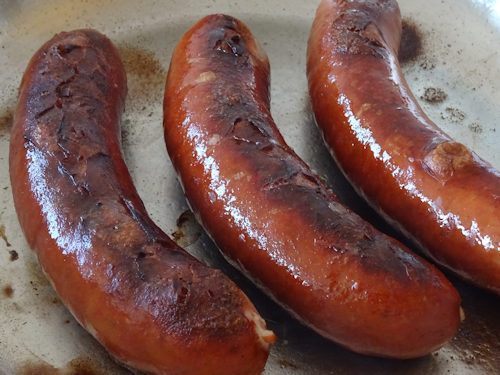
* By the way, don’t buy Austrian Vignettes on line. They can be purchased at any garage at a considerably lower cost. The one we bought online was for 10 days and would cost about 9 Euros at a garage. Online, the price was literally doubled.

